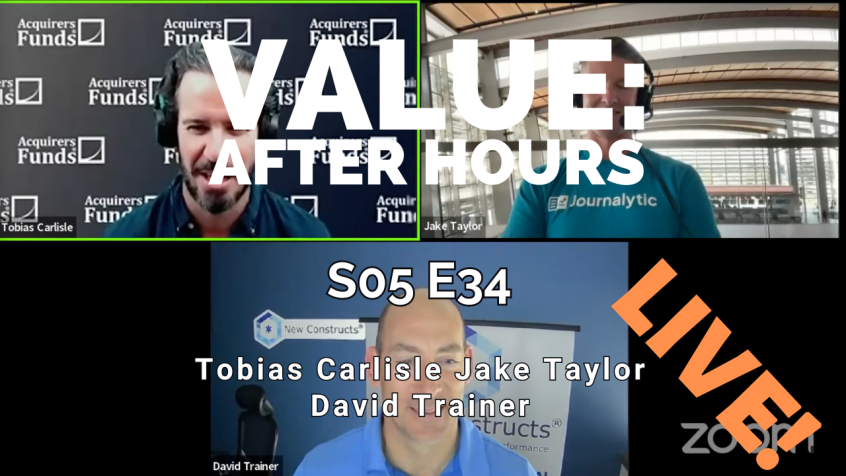During their latest episode of the VALUE: After Hours Podcast, Trainer, Taylor, and Carlisle discussed ChatGPT: Is It A Mass Plagiarism Machine Or A Real Advance In Machine Learning?. Here’s an excerpt from the episode:
Tobias: Not looking good for the old NFT searches though. I checked the Google search every now and again, it’s getting a little bit sad. It’s down to three. They give you the 100 as the index top, and so it’s three off an index top of 100, so NFTs are pretty dead. ChatGPT holding pretty strong. ChatGPT has made a big recovery. So, maybe ChatGPT is the real thing. I don’t know.
Do you dabble in any of that sort of stuff? Given you’ve got a long background in machine learning, I’d hesitate to call it AI– I don’t know how much real AI is out there, but do you look at any of that stuff? Is it an advance on what we’ve had before?
David: It absolutely is. But I also agree with you, Tobias, that I would hesitate to call any of it, artificial intelligence. Intelligence to me suggests that there’s some ability, there’s some sentience there that can discern patterns that weren’t previously discerned. I think you’ve heard some folks call ChatGPT and these other things more like mass plagiarism machines. They’re great at copying.
Jake: [laughs]
David: But they’re not innovating. I think there’s a big distinction there. And so, yes, there are for sure much better machine learning tools out there, but it’s really about the processing power. If you look at what Nvidia brings to the table, it’s in that graphics processing unit in technology that was able to process things so fast. It lent itself. If you really talk to the AI experts, they’ll eventually admit to you that it’s really advances in computing power that are driving what we are calling AI today. There’s a lot of intelligence there, but it comes back to what I said in the beginning about how our system works.
There’s no substitute for the decades we’ve spent going through and having experts classify all the little different accounting items that look like one thing but mean another, or look different from another accounting item but actually the same, that over and over and over has built the training data set that our machines can plagiarize, so to speak, in order to say, “Okay, well, I’ve seen it done like this before. I’m going to assume this pattern applies to this company in this same sector.” That’s really what machine learning is.
Machines learn from someone really smart, telling them to do something sophisticated, or they can learn from someone doing something really simple like robotics on an assembly line. But it’s increasingly sophisticated instructions that machines can now follow and interpret. And at the end of the day, it’s the quality of the instruction that makes a difference, just like it is with any software. We think we built some really high-quality instruction around how to navigate footnotes.
Jake: I saw this interesting write up about– It was out of Bain, I think, and some other researchers. They did a study on consultants and they gave some of them– They established a baseline for them as far as productivity, quality of work, output. And then they gave some of them ChatGPT, some of them not. And then what they found out of the study was that, interestingly enough, the bottom portion of workers had the biggest productivity boost, but the high-end people didn’t really see that kind of boost. So, it was almost like a leveling of the output between poor or less experienced versus the top tier. I don’t know what that means for society, in general. If you raise the floor but not really push the ceiling any higher.
Tobias: That’s not what I would have expected. I would have said it was the other way around. That’s funny. That’s counterintuitive.
Jake: It’s very interesting.
Tobias: Do you know what they did? What the actual things that do?
Jake: I don’t know, I think maybe the– At the end of the day, it’s always about pattern matching. And so, the people with less experience have less patterns to match, potentially. And then this is giving them new ideas and new patterns to look for, whereas the other higher end people, maybe they already knew the pattern and so they didn’t really get as much out of it. That’s just my very unscientific guess about it, but very interesting.
You can find out more about the VALUE: After Hours Podcast here – VALUE: After Hours Podcast. You can also listen to the podcast on your favorite podcast platforms here:
For all the latest news and podcasts, join our free newsletter here.
Don’t forget to check out our FREE Large Cap 1000 – Stock Screener, here at The Acquirer’s Multiple:




